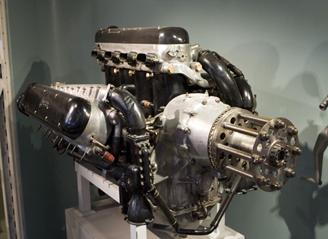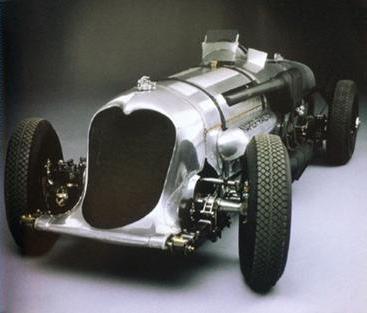
DID – U – KNOW
by Facia Nearside
 Born in 1870 Montague Stanley Napier became the owner of his grandfather’s engineering company, D. Napier & Son, in 1895. At the time the firm produced machine tools for the cycle industry, but after meeting race car driver Selwyn Edge in 1899, Napier diversified into automobile manufacturing. By 1912 Napier was the leading supplier of luxury cars in Great Britain. Born in 1870 Montague Stanley Napier became the owner of his grandfather’s engineering company, D. Napier & Son, in 1895. At the time the firm produced machine tools for the cycle industry, but after meeting race car driver Selwyn Edge in 1899, Napier diversified into automobile manufacturing. By 1912 Napier was the leading supplier of luxury cars in Great Britain.

Napier Lion II at Canada Aviation Museum
|
|
 When the first world war broke out Napier were contracted to build aeroengines to designs from other companies. These engines proved to be unreliable however, so Napier decided to design their When the first world war broke out Napier were contracted to build aeroengines to designs from other companies. These engines proved to be unreliable however, so Napier decided to design their
| |

Napier-Railton is an aero-engined race car built in 1933
|
own engine. Requiring high power output and low weight Napier’s engineers designed a 12-cylinder 24-litre engine consisting of three banks of four cylinders sharing a common crankshaft. The engine was quite advanced for the time using four valves per cylinder with twin overhead camshafts. Named Lion the engine entered production in 1918. With an output of 450 horsepower, it was the most powerful Allied aircraft engine of the war.
 Napier resumed automobile production after the war, but by 1925 decided to abandon that market and concentrate on aero engine production. At this same time automobile racing was becoming very popular and capabilities of the Napier Lion engine soon attracted the attention of wealthy racing driver John Rhodes Cobb. Following several wins driving a 10-litre Fiat Cobb was looking for more power, and the Napier Lion was a logical choice. He commissioned Reid Railton to design a car utilizing the monstrous aero engine, now in supercharged and highly tuned racing form producing more than 1300 horsepower. The result was the Napier-Railton, capable of reaching 168 mph. Napier resumed automobile production after the war, but by 1925 decided to abandon that market and concentrate on aero engine production. At this same time automobile racing was becoming very popular and capabilities of the Napier Lion engine soon attracted the attention of wealthy racing driver John Rhodes Cobb. Following several wins driving a 10-litre Fiat Cobb was looking for more power, and the Napier Lion was a logical choice. He commissioned Reid Railton to design a car utilizing the monstrous aero engine, now in supercharged and highly tuned racing form producing more than 1300 horsepower. The result was the Napier-Railton, capable of reaching 168 mph.

The Railton Mobil Special was powered by two supercharged Napier Lion VIID (WD) W-12 aircraft engines.
|
|
 Next Cobb turned his attention to the land speed record. During the 1920s and 1930s the speed record was a constantly moving target as ever more powerful machines were constructed. Incredibly Cobb decided two Napier Lion engines was the way to go. The result was the Mobile Railton and Cobb drove it to a record 350mph in 1938 to become the fastest man on earth. The record was soon broken but Cobb recaptured it several more times. The final run for the twin Napier Lion powered Mobile Railton came in 1947 when Cobb drove it to an astounding 394mph. Next Cobb turned his attention to the land speed record. During the 1920s and 1930s the speed record was a constantly moving target as ever more powerful machines were constructed. Incredibly Cobb decided two Napier Lion engines was the way to go. The result was the Mobile Railton and Cobb drove it to a record 350mph in 1938 to become the fastest man on earth. The record was soon broken but Cobb recaptured it several more times. The final run for the twin Napier Lion powered Mobile Railton came in 1947 when Cobb drove it to an astounding 394mph.
Editor Note: Article previously published in British Boots and Bonnets newsletter, March 2022
|